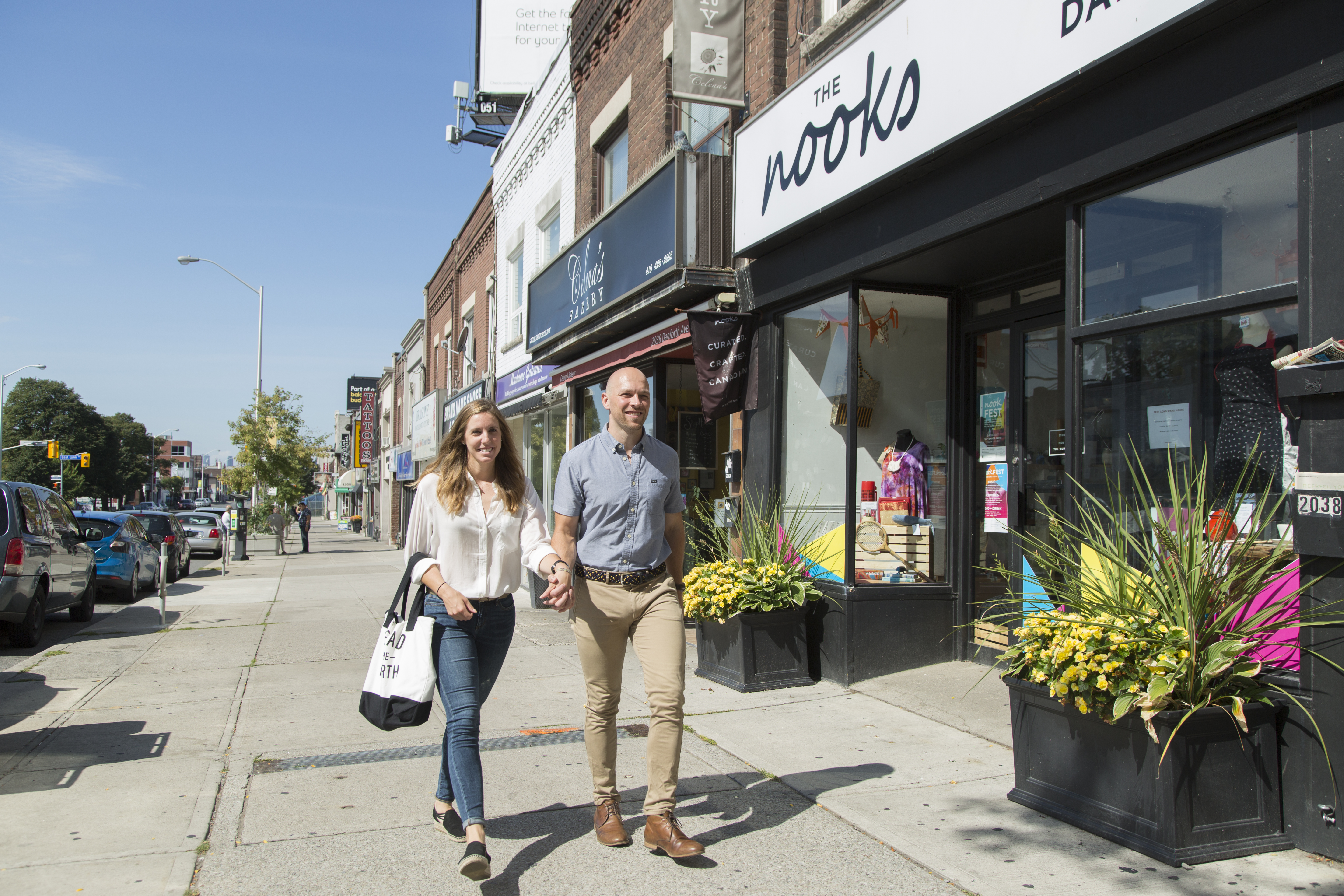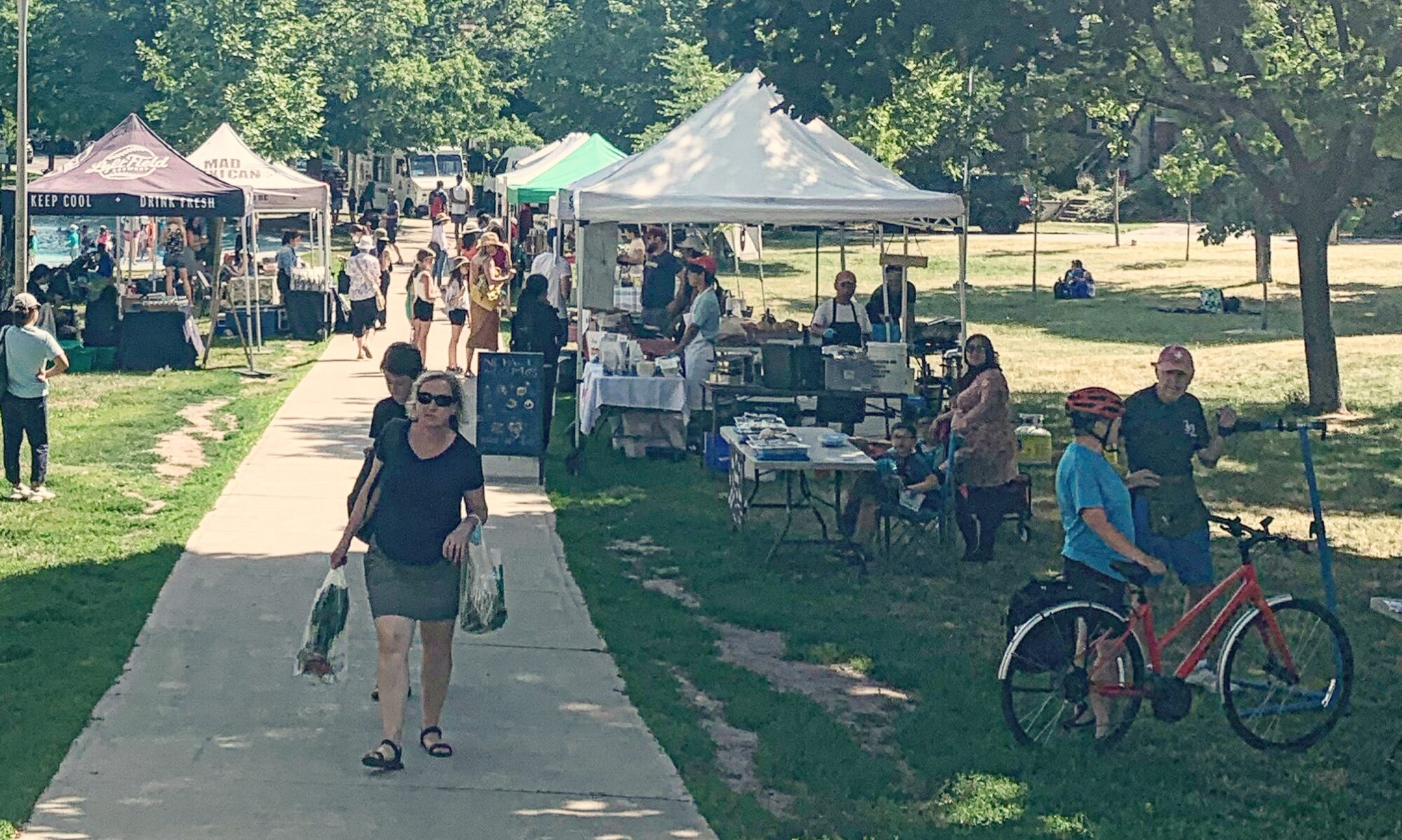As we indicated in our recent blog post, DECA posed the same questions to every Ward 19 City Councillor candidate with a published email address (on the city election website). We are publishing their replies in the order that we receive them.
Meet: Brad Bradford

1. What makes you the best person to represent the Danforth East area?
I have meaningful experience with local government and know how to get things done at City Hall, I’ve made a positive impact in our community as a Board member of the Danforth East Community Association (DECA), and I won’t be another career politician.
Governing at any level isn’t easy but managing the complexities of a city as unique as Toronto and a community as diverse as BEY, needs a real understanding of how City Hall works – this isn’t something you get anywhere else. I have a credible record of city-building at City Hall, both as a professional urban planner but also as an active member of our own community. All of the candidates bring different experience to the job, but I’m the only one who brings leadership from City Planning,
Knowing how the city works, it won’t take me two years to figure it out – I will hit the ground running from day one. I’m in it because I have a deep belief in public service and the power of community-led change. Some people want to be politicians – but I want to bring positive change. My commitment to term limits is proof that I’m here to make a difference, and not just here for a job.
I’ve been fortunate to serve and make a positive impact in our community in a number of tangible ways. I’ve served on the Board of DECA, helping to contribute to a vibrant community and engaging on the Coxwell Barns/Police Station Consolidation site visioning process. I’ve been involved in city planning consultations across Toronto, championed the reduction of single-use plastics and worked on the City’s Climate Change Strategy. I’ve taught new Canadians how to navigate the city by bicycle with Culture Link and I founded the Toronto Hustle cycling team, using our platform to raise awareness around road safety.
Many of the candidates have similar policies and have identified common issues. But it’s the approach to addressing them that differentiates us. You’ll really see one thread running through my policy and campaign: making the city work for you. What that means is real consultation, really listening to residents, and being a strong champion for community-led change. I have the relevant experience, know-how, and ability to work with everyone in the Council chamber to make sure we keep moving Beaches-East York forward.
2. What do you think is the most pressing issue for this area, and what is your plan to address it?
My top priority is to continue supporting community-led change in Beaches-East York, and making sure that local government works better for the residents I serve. This means safer streets, stronger local businesses, improved transit and mobility, and investments in community spaces and child care.
Safe Streets
Safer streets are about giving everyone the ability to travel comfortably, reliably, and safely — that includes building the Downtown Relief Line, stopping the short-turns on Queen streetcars, delivering all-day express services on priority bus routes, and improving road design for all road users. We need to shorten commutes and simplify logistics, regardless of how you travel.
Road safety for children, seniors, and people with accessibility challenges is the number one issue I hear about at the door. There is no shortage of ways to make driving, walking, and biking safer. But we need a local government with the vision and the political will to make it happen. Different areas will call for different solutions but there are immediate steps we can take like:
-
Improving traffic signal systems to improve the flow of vehicle traffic;
-
30 km/h local street limits and enforcement measures;
-
Barrier curbs for bike lane separation;
-
Streamlining the process for installing traffic calming measures;
-
Improved intersection design that prioritizes pedestrian safety;
-
Expanding neighbourhood cycling connections;
-
A full commitment to the Vision Zero goal of reducing road deaths to zero.
Strong Local Businesses
The health of our main streets is fundamental to the strength of our community.
Today, our main streets are struggling with vacancies and high turnover. Acknowledging the problem is not enough — we need to take action. I will support our main streets by working with the business community and that includes better communicating the needs of residents to entrepreneurs and expanding businesses.
My 5-point plan for supporting local businesses and strengthening our main streets:
-
Bring back jobs to our main streets to generate daytime, year-round customers;
-
Deliver Pop-up Tenants and Incubating Local Entrepreneurs. Learn from the successes of DECA to apply a ‘pop-up’ shop model to main streets throughout Beaches-East York. Develop a Beaches-East York business incubation strategy to connect growing local businesses with property owners seeking tenants;
-
Ensure retail design is at the forefront of space planning for new developments;
-
Work with BIAs and residents to identify the types of businesses the community needs;
-
Reduce start-up costs and accelerating the permit process for entrepreneurs and those looking for short-term and sub-leases.
For more on transit, investments in community spaces and more, please visit https://www.bradbradford.ca/
3. Who do you support for mayor, and why?
Being Mayor is a difficult job – politicians are most effective when they can work together to get things done. There will always be polarizing decisions, and people who land on different sides of issues. The Mayor is just one vote on Council.
John Tory has provided stability after a chaotic administration. He’s also brought forward visionary projects like Rail Deck Park and thoughtful solutions to the King Street Pilot. Jennifer Keesmaat has been a critical and important voice in the city-building conversation. She’s demonstrated creative solutions to some of Toronto’s most pressing problems. Sarah Climenhaga is running on a road safety platform and has been working tirelessly, campaigning all over the city for many months. I like her hustle.
The Mayor cannot drive an agenda with strong, community minded councillors. I am ready to work with either mayor and a wide range of council members to secure funding and achieve progress on issues that matter to the residents of Beaches-East York.
I am the only candidate with endorsements from both John Tory and Jennifer Keesmaat and for a community-driven, grassroots campaign, I find that support really encouraging.
With this in mind, I believe our democracy is always strongest when we have a competition of good ideas – so we’re all better off with a competitive mayoral race. I’m not going to tell people how to vote, but I hope all of our readers go out there and cast their ballot.
4. DECA took the position that changing the ward boundaries during the election was undemocratic. What do you think about that?
Undemocratic is the only (publicly appropriate) word for what Doug Ford did to Toronto this summer. You don’t change electoral boundaries, especially during an election.
I’ve been to more than 50,000 doors, and talked to a lot of residents about this issue. Some support the move to 25 councillors, some support 47. Regardless, most agree that the process – changing electoral boundaries during an election – is crazy.
It was certainly chaotic and intense for me and my team. The campaign has definitely changed – we started canvassing harder, began the process of learning and understanding the needs of an expanded community, and setting more ambitious goals.
We need the city to work for the people. The unilateral slashing of council is not the way to go about this. Can we do things better as a city? Absolutely. That’s a big part of why I’m running. But I don’t think changing electoral boundaries in the middle of an election is the way to do it, especially after all the work that went into getting to 47 councillors.
5. We expect that our area will see a lot of development in the next four years. What do you think about that?
The growth we’re experiencing is a credit to the community that’s been built here over the years. Danforth East, and Beaches-East York as a whole, is a beautiful place to call home and it’s not surprising that more people want to move here.
Growth and development are part of being a dynamic city like Toronto. But as we grow I want to see respect for the local voice and planning process. While I worked in the Chief Planner’s Office, all too-often I saw the city spend years working closely with residents and all stakeholders to make visionary, balanced plans for our community only for those same plans to be overturned at the Ontario Municipal Board.
This is simply unacceptable. It’s unfair to everyone who took part in those processes for all of their hard work to be undone, and it’s unfair to the current and future residents of our community to see an unsustainable approach to new development.
The OMB is now gone but we don’t know if the current provincial government will restore some of the old powers or go back towards that broken system. That’s why I wrote a letter to Steve Clark, Minister of Municipal Affairs and Housing asking him to commit to not restoring the old OMB system. You can see my letter here: https://www.bradbradford.ca/omb
Investment and growth in our neighbourhoods can be a good thing when the entire community gets a lift. This will help our community welcome new members and it’s the only way to ease the pressure on housing affordability. But we want growth which respects the work our communities do to set out a vision for how to grow. We need the associated plans and funding in place for transit, affordable housing, and community services to name just a few.
6. How will you contribute to a more diverse and representative Council?
Thank you for asking this important question.
One thing I wish I could talk more about on the campaign trail is the work I do as a Civic Action DiverseCity Fellow. The fellowship is all about amplifying the voices of Torontonians typically left out of the city building conversation.
While I’m not part of an equity seeking group, diversity is front of mind for me and I’m always working on how to be a better ally. Diversity is embedded in the work I’ve done as a planner over the years – working on meaningful conversations about how the city should develop means going the extra mile to bring under-represented voice to the table. As the youngest candidate in the race (32 years old!), I’m excited about bringing fresh ideas to City Council, and I think that having a balance of perspectives would be more representative of the city we live in.
My contribution to diversity and representation on council will be to make space and be aware of when to speak up and when to step back. I am committed to speaking up when historically marginalized voices are not being heard, and to step back to make space for the leaders of these communities to represent their interest.
Among the many lessons I’ve learned running for council is that we have incredible leaders in this city, many unsung heroes. Our neighbourhoods are full of local champions and I will work hard to be responsive so we can make the city work for everyone.

